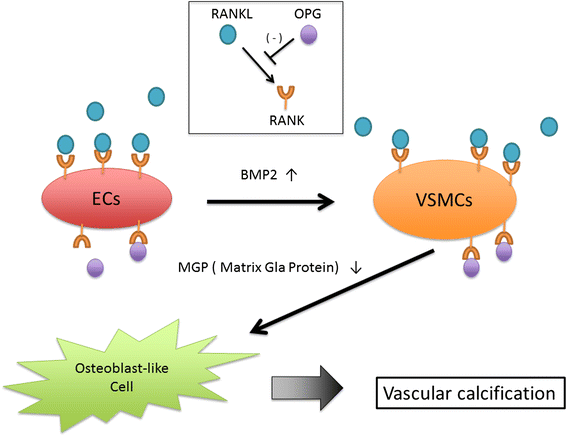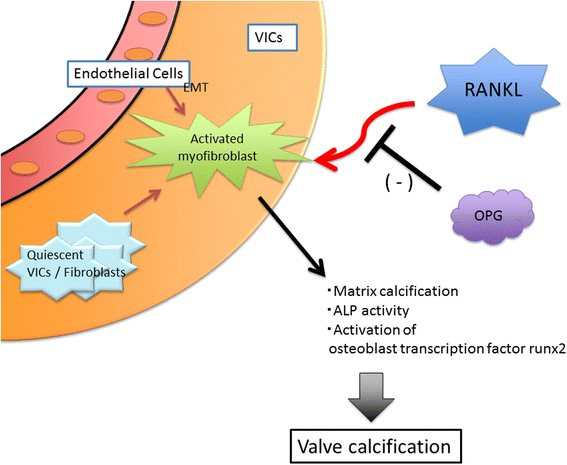RANKL system in vascular and valve calcification with aging
- PMID: 29259683
- PMCID: PMC5725909
- DOI: 10.1186/s41232-016-0016-3
RANKL system in vascular and valve calcification with aging
Abstract
Vascular and cardiac valve calcification is associated with cardiovascular mortality in the general population. Increasing clinical and experimental evidence suggests that inflammation accelerates the progression of calcification, which has molecules in common with bone metabolism. For example, osteopontin (OPN), osteoprotegerin (OPG), receptor activator of the nuclear factor κB ligand (RANKL), and alkaline phosphatase (ALP) are proposed to play central roles in the calcification or demineralization of atherosclerotic lesions and the calcification of cardiac valves. Abnormalities in the balance of these proteins may lead to perturbations in vascular/valve calcification. "How to prevent calcification" is a common task based on conventional data; however, several pathological findings indicate that heavily calcified plaques are stable, which may not lead to coronary events. Vulnerable plaques tend to be either noncalcified or only mildly or moderately calcified. "How to treat calcification," which depends on the details of the specific patient, thus remains a difficult challenge. In addition to the detection of calcification, characterization as well as quantification of it is necessary for optimal treatment of this pathology in the future.
Keywords: Cardiac valve calcification; ECs; OPG; Osteoporosis; RANK; RANKL; VICs; VSMCs; Vascular calcification.
Figures



References
-
- Osler W. The principles and practice of medicine. 3rd edition. New York, London: D. Appleton and company; 1898.
-
- Okuno S, Ishimura E, Kitatani K, Fujino Y, Kohno K, Maeno Y, et al. Presence of abdominal aortic calcification is significantly associated with all-cause and cardiovascular mortality in maintenance hemodialysis patients. Am J Kidney Dis. 2007;49:417–25. doi: 10.1053/j.ajkd.2006.12.017. - DOI - PubMed
Publication types
LinkOut - more resources
Full Text Sources
Other Literature Sources
Research Materials

